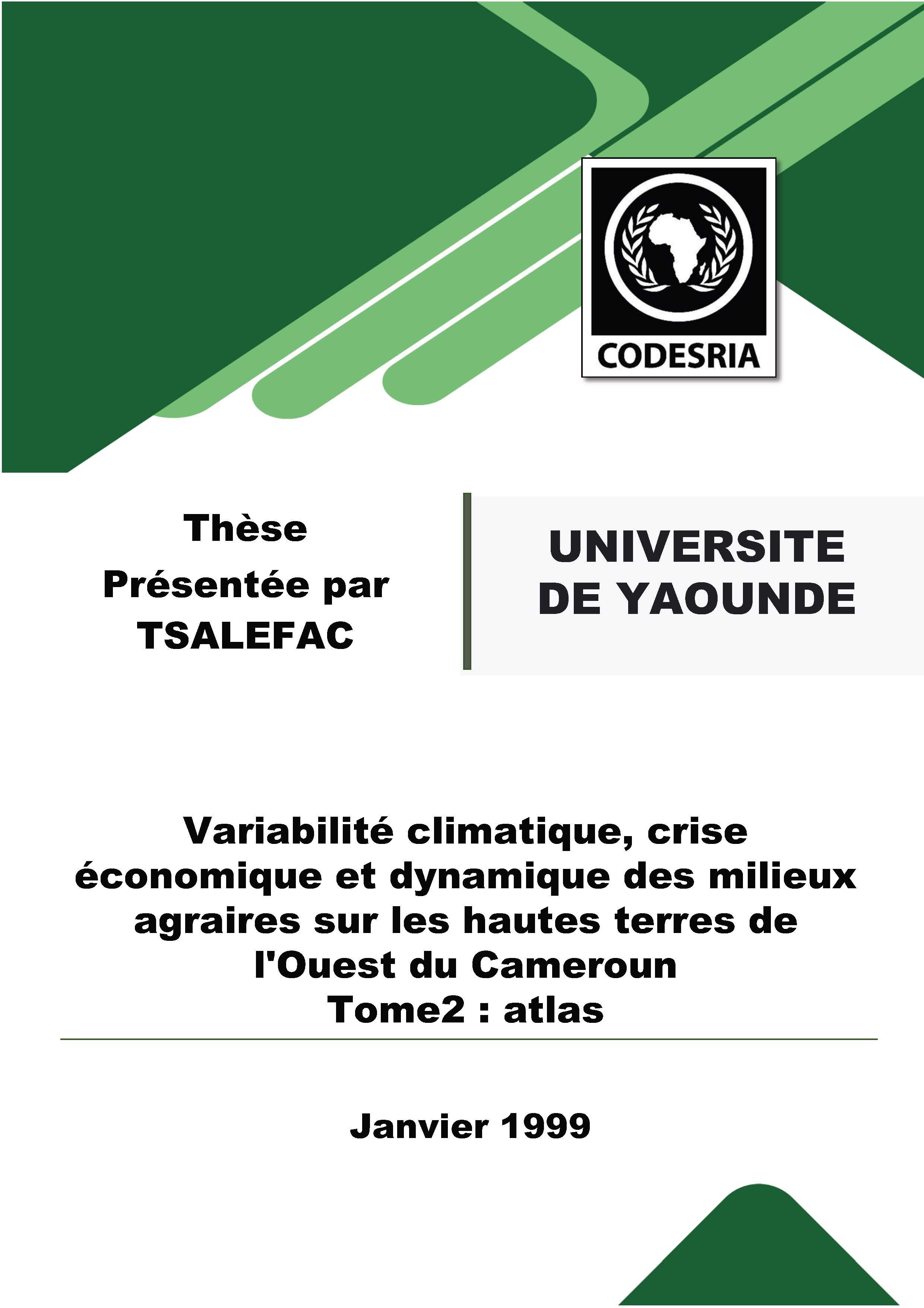Variabilité climatique, crise économique et dynamique des milieux agraires sur les hautes terres de l'Ouest du Cameroun Tome2 : atlas
Keywords:
Variabilité climatique, crise, CamerounSynopsis
Situated between latitude 4°50 to 7°N and longitude 9°25 E to 11 ° 40 E, the Western Highlands of Cameroon occupies a surface area of 7500 sq. km. They constitute an original geomorphological entity at the hinge of west and central Africa which are dominated by flat surfaces. Apart from this peculiarity there are other important characteristics: a great diversity of soils derived from volcanic rocks or crystalline basement complex, a vegetation cover that varies from upland or summit prairies to relatively dense forests through various transition savannahs and multiple agro-forestry landscape created by man. Climate reinforces the originality of the region. Through the study of its variability, considered as. one of the driving forces of the changing landscape in the region, it is shown that climate has played an important role in the elaboration of past and current landscapes. Based on the perception of the local population the climate variability is described. It is also analysed using conventional and satellite data. It appears then that the region is at the limit of the influence of the northern (harmattan) and the southern trade winds. Although it falls under a transitional situation, the variability of the climate in the region is moderate compared to the rest of the country. This is due to the quasi permanence of rain generating cold cloud. This major peculiarity combined with the altitude reduces the climate aggressiveness and explains the presence of water on high as well as in the low-lying areas. The cold clouds originate from the Atlantic monsoon and the equatorial air on one hand and from moisture coming from the east (TEJ) on the other hand. The importance of the later on precipitations on the Cameroonian territory in general and on the western highlands in particular has been clearly established on the basis of satellite images. It reduces the role that was thought to be played by the Atlantic monsoon. The use of satellite images has also permitted the delimitation of areas of different air masses influence on the Cameroonian territory, in particular, the harmattan and the Southeast trades masses, factors which are dominant on rainfall variability in the country. Furthermore it helps to detect some particular land surface characteristics. The complex relationship between climatic variability, land use and the economic context of climatic crisis brings into question the sustainability of the land use in the region. If in this context, time tested agrarian landscapes
were developed ( like enclosures supported by ridges cultivation system following the contour lines or along the direction of the slopes), recent droughts have revealed the precariousness of this agrarian system, the dependency and the peasantry poverty in face of a cash economy, largely attached to the state and the International market. In response to the current economic crisis cash crops, market gardening crops destined to supply urban markets or for local consumption are developed in rural area to the detriment of coffee cultivation. It is in this context that is developed a new conquest for upland and low-land areas which were formerly reserved to livestock and raffia respectively. This change in land use which does go without consequences on local and regional climate, was accompanied by land conquest to the advantage of urban elite at the expense of traditional aristocracy. At the same time, women began to show interest for the possession of land. One therefore notice that in rural areas, there is a veritable social transformation which is reflected in the landscapes. Taking into consideration the economic and social needs, little attention is thus paid to the protection of natural resources for long term development. This work therefore describes, analysis, questions the future of the processes described above and proposes some solutions for the
sustainable development of the region.
Downloads






